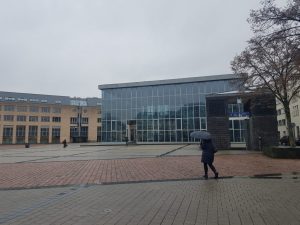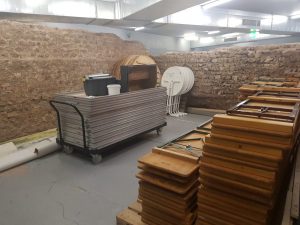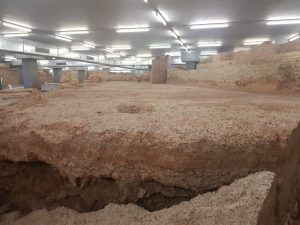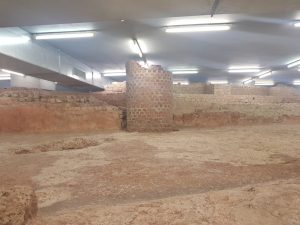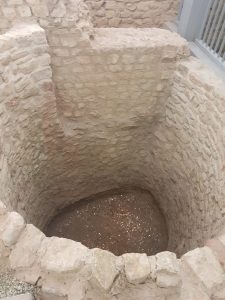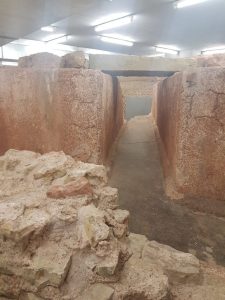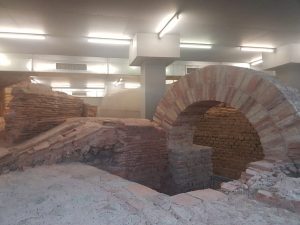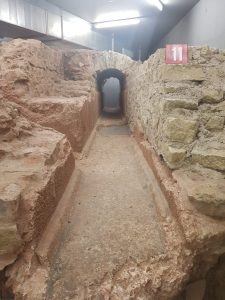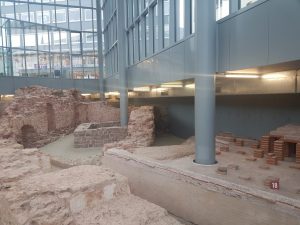Trier – Therman am Viehmarkt
The final Roman site in Trier for me to visit, which are more baths in what is otherwise a modern looking building in the middle of Viehmarktplatz (Cattle Market Square). There was an extensive set of Roman baths here, as well as a much later monastery, but the stone was robbed away, and partly used when constructing Trier Cathedral. The red line of bricks in the above photo, which crosses another red line, is the line of the old Roman road.
After the monastery, built in the seventeenth century, was suppressed by Napoleon, the whole lot remained underneath what became a market and car park (admittedly it didn’t become a car park until the twentieth century). It was when a lovely new underground car park was being constructed in the 1980s that these foundations were discovered and an archaeological dig then took place to properly excavate the site.
I arrived at the museum in the morning and there was no-one at the visitor desk, which was confusing. I went back in the afternoon and the situation was revealed, there is a large wine event taking place tomorrow and so they were a little distracted. The helpful staff member said that I was welcome to look around and gave me an orientation map which was in English. There was a lot of wine around the place, they were very trusting that I wasn’t someone who would decide to pinch some of it…..
And it was also a good idea of mine (which is rare….) to go back this afternoon, as the location is closed tomorrow (unless I want to go to a wine event). Anyway, a lot of the Roman walls had a lot of wine event related items in front of them, as can be witnessed in the above photo. But I was pleased to be able to look around, they hadn’t put anything in the way that obstructed my visit. Although I did read that the city has decided not to try and include this site in the list of UNESCO World Heritage monuments (it was discovered just after the others in the city were designated) as they wouldn’t be able to hold events in it.
This is the floor of one of the large swimming baths, originally it had black and white marble slabs. I’m impressed that it has remained in such good condition, although I can imagine it was never worthwhile anyone trying to dig it up.
There’s one exception to no-one digging it up, this is a circular drainage pipe added in 1902. They seemingly drilled down oblivious to what they were cutting into….
A latrine shaft.
The entrance to the heating installation.
A stair tower.
This is the former Roman street (above the culvert) which ran from north to south, and they discovered eleven different layers of development when completing the archaeological dig. The oldest layers dated to the first century AD, whilst the later layers dated to the fourth century AD. The culvert itself was for transporting sewerage.
The bit on the right hand side of this photo is the warm bath hall, but the bit on the left is the later monastery which was standing until the eighteenth century. In the middle, built into the monastery, is a latrine shaft which was used from the thirteenth to nineteenth centuries.

